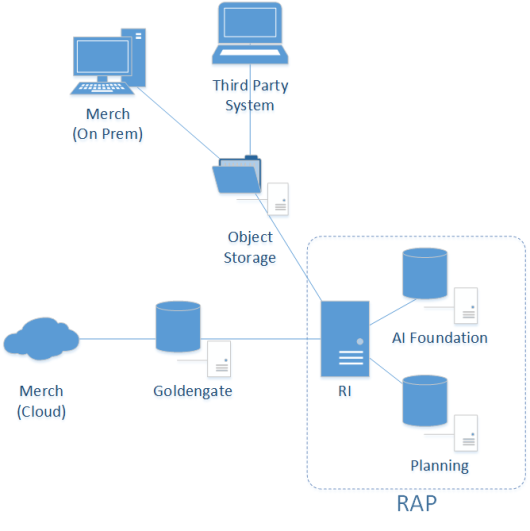Data Requirements
Preparing data for one or more Retail Analytics and Planning modules can consume a significant amount of project time, so it is crucial to identify the minimum data requirements for the platform first, followed by additional requirements that are specific to your implementation plan. Data requirements that are called out for the platform are typically shared across all modules, meaning you only need to provide the inputs once to leverage them everywhere. This is the case for foundational data elements, such as your product and location hierarchies. Foundation data must be provided for any module of the platform to be implemented. Foundation data is provided using different sources depending on your current software landscape, including the on-premise Oracle Retail Merchandising System (RMS) or 3rd-party applications.
Figure 3-1 Inbound Foundation Data Flows

Retail Insights is used as the foundational data warehouse that collects and coordinates data on the platform. You do not need to purchase Retail Insights Cloud Service to leverage the data warehouse for storage and integration; it is included as part of any RAP solution. Regardless of which RAP solutions you are implementing, the integration flows shown above are used.
Application-specific data requirements are in addition to the shared foundation data, and may only be used by one particular module of the platform. These application data requirements may have different formats and data structures from the core platform-level dataset, so pay close attention to those additional interface specifications. References and links are provided later in this chapter to guide you to the relevant materials for application-specific inputs and data files.
If you are using RMS as your primary data source, then you may not need to produce some or all of these foundation files, as they will be created by other Oracle Retail processes for you. However, it is often the case that historical data requires a different set of foundation files from your future post-implementation needs. If you are loading manually-generated history files, or you are not using an Oracle Retail data source for foundation data, then review the rest of this section for details.